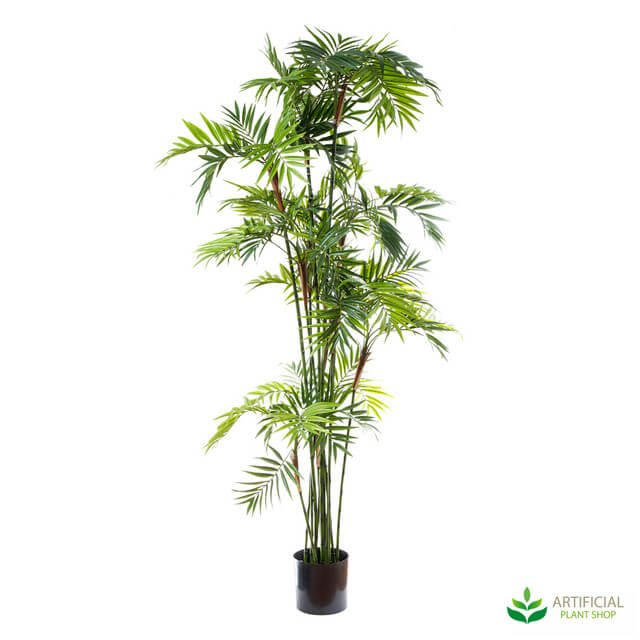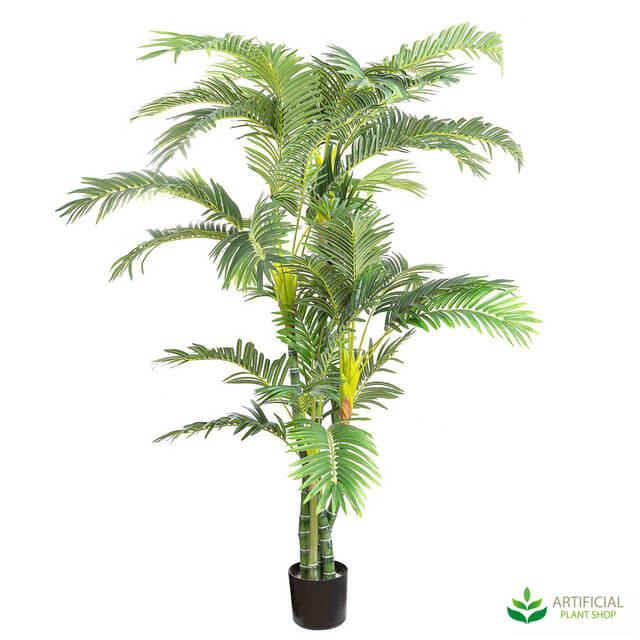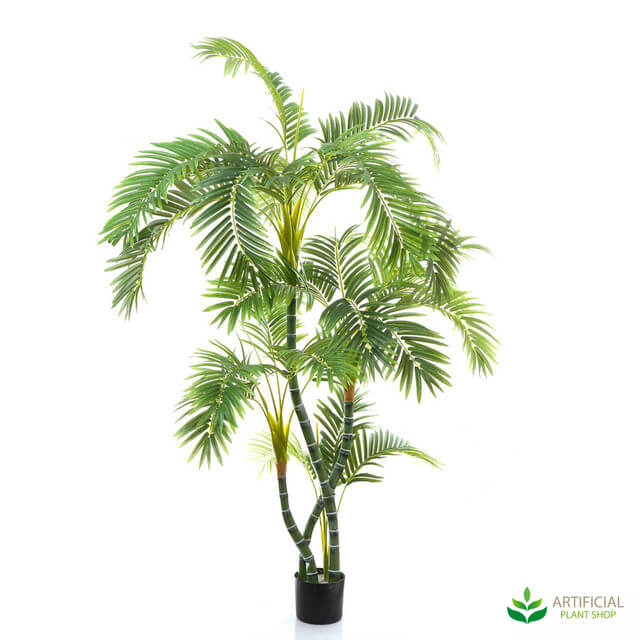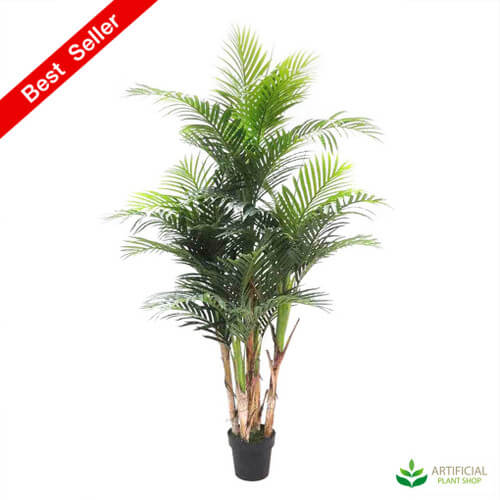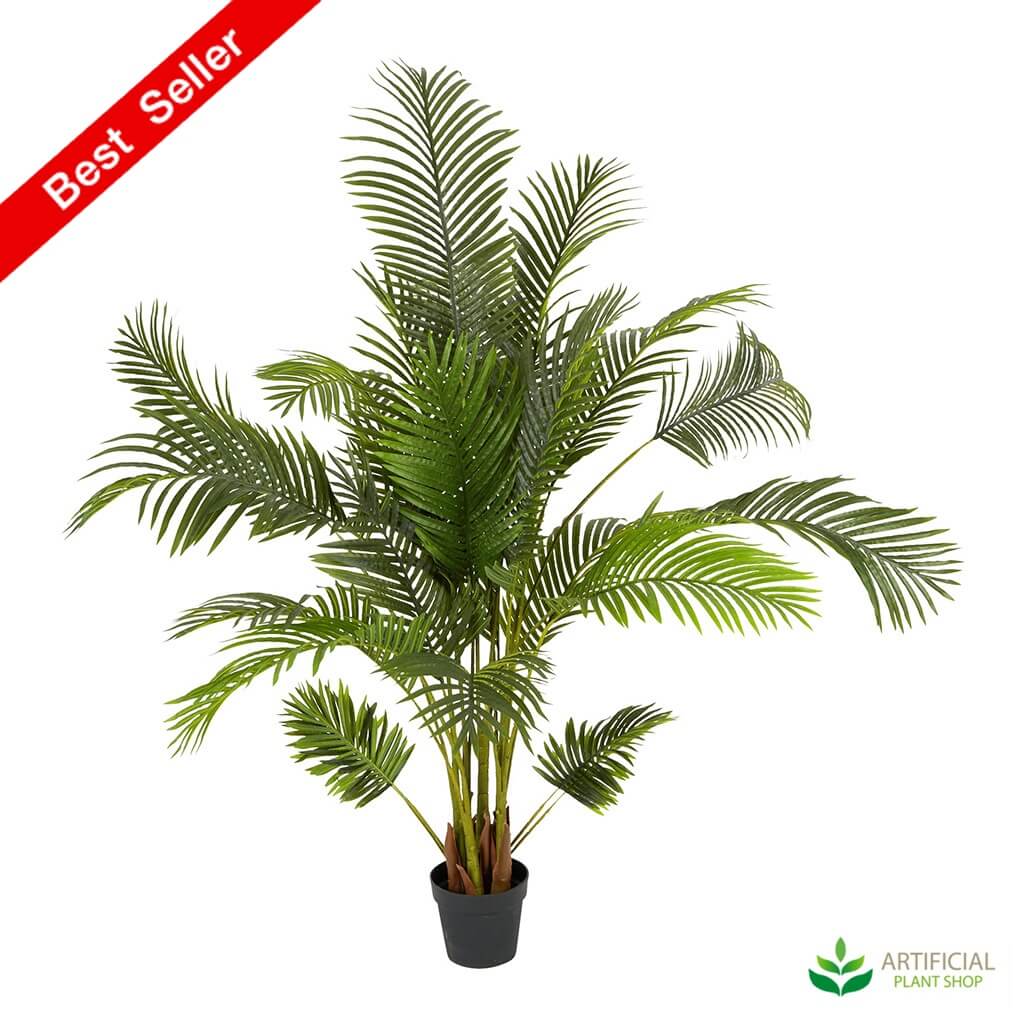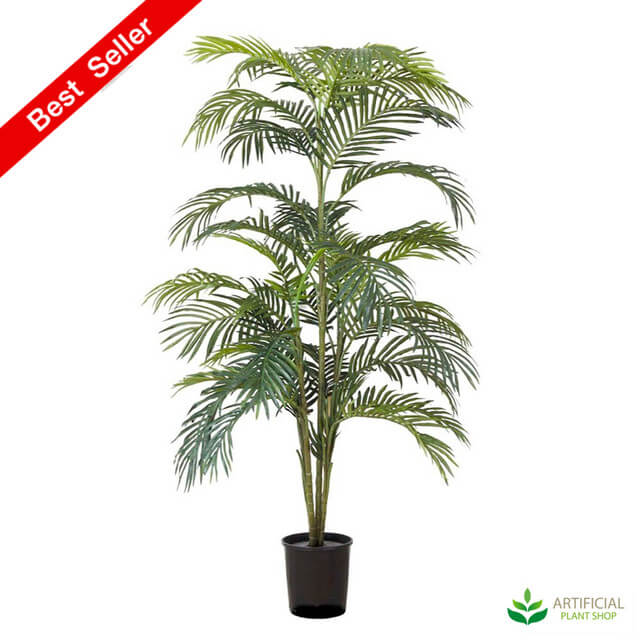What Are the Best Indoor Palms?
29th Aug 2022
What Are Indoor Palms?
Indoor palms are a lovely, exotic addition to any house. These tropical plants can convert a lifeless room into a lush oasis. They're generally large enough to catch the eye, and their feather like leaves make for an eye-catching foliage display.
Palm plants for indoors come in various forms, sizes, and types. As a result, there are several varieties to consider before determining which one would best suit your room and style.
This article will review a few of the best indoor palms for your decor.
Best Palms for Indoor Decoration
Let's look at some artificial and genuine indoor palms you can explore for your décor.
Artificial indoor palms
Phoenix palm
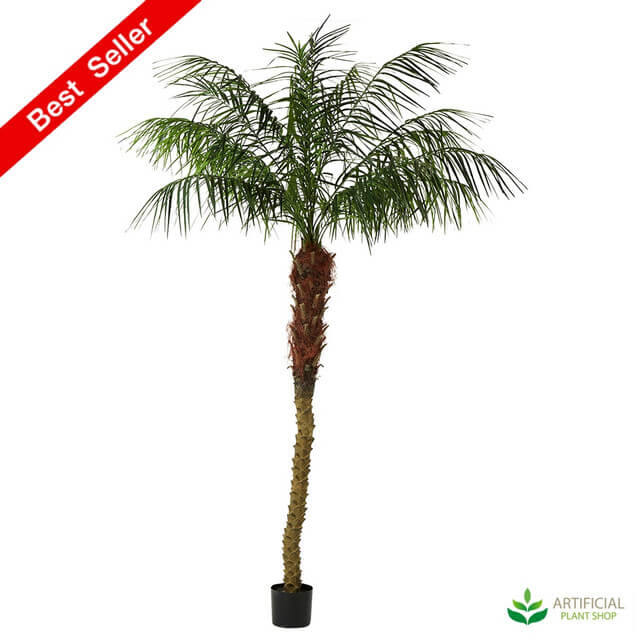
This deluxe 2.1-metre Phoenix artificial palm tree has a lot of silk leaves and a large and heavy pot base for added stability. This fake phoenix palm tree is 2.1 m tall - you can bend each branch anyway you like, which may reduce the overall height.
Its 20 cm base is large enough for stability but small enough for you to place it inside your favourite pot or planter. These faux trees can weigh up to around 9 kgs and stand on their own. They require very little maintenance and are ideal for your home or office. There is no restriction on how you can improve your overall décor, just your imagination. Where would this iconic, tropical style tree look good in your home?
Artificial Paradise Palm
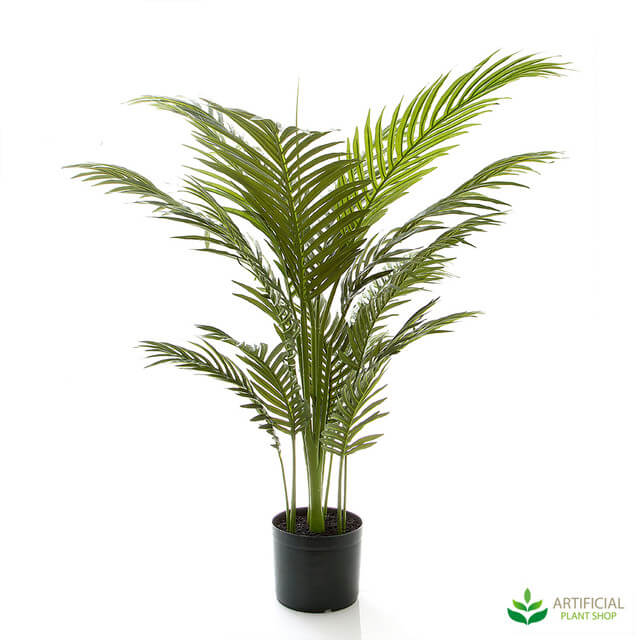
Do you want to add a unique touch to your house or business space without breaking the bank? The artificial paradise palm is a great value option. This topical beauty is 95cm tall and gives vitality to any décor. Consider placing this together with larger palm trees, in matching pots to give the impression they growing together and belong together.
It features natural-looking fronds and each one is meticulously constructed with a beautiful blend of wispy, feathery curved leaves. It’s made to deliver years of maintenance-free beauty.
It requires very little care, no watering and still looks full and new, every day. Gently wipe it down with a dry towel to keep it clean and looking its most natural. With its beautiful fronds, it will make a powerful impression on not only you but also your guests.
Multi-trunk Areca palm
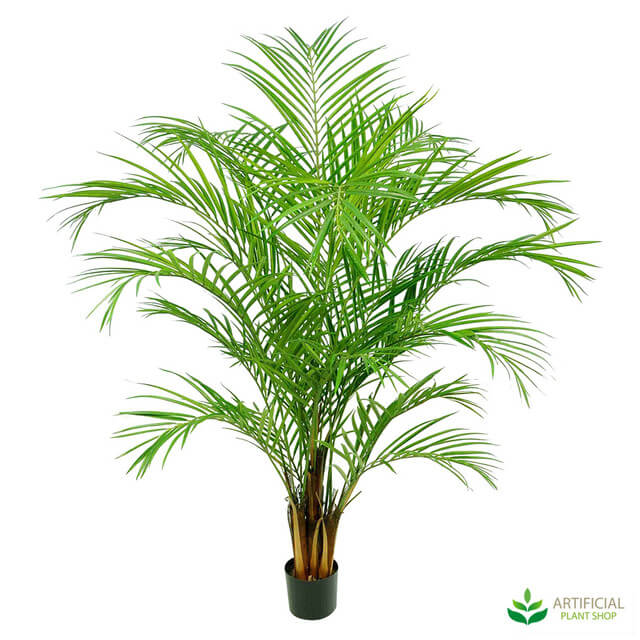
This is another palm plant that you can use to infuse a tropical look and feel to your space. This multi-trunk Areca palm tree is natural looking and offers an authentic natural plant feel.
The trunks are a healthy green colour with white growth rings implying it’s a mature tree, much like a natural palm. It has a 20 cm wide pot that allows you to easily pick it up and place it inside your favourite planter. Much like the Paradise palm, it has well-arranged and beautiful green leaves that give this sago-like palm a dazzling, genuine appearance.
Traveller's palm
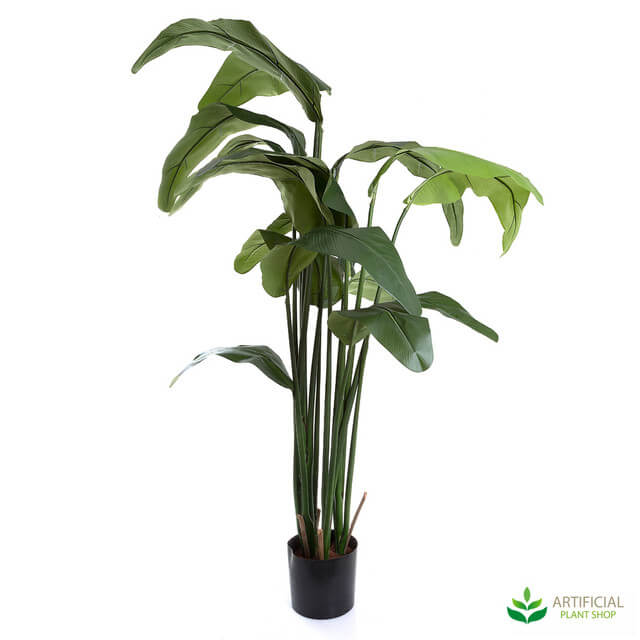
This fake Travellers palm tree has been crafted to look like a natural traveller's palm, and it seems as real as it possibly can. It is an excellent addition to the decor of any room or office, and it will give you the feeling of being in the presence of nature.
The trunks can be adjusted to whichever shape you want without breaking because it’s fitted with sturdy inner metal wires. This artificial plant does not need pruning or re-potting and will give you that topical, rain forest feel for years to come.
One of the best things about this palm is the lack of maintenance… much less than alternative plants. The reason comes down to the large leaves, so there are fewer of them to clean… Because they are so simple to clean, all that is required to get rid of any dust accumulated on them is a damp cloth or a duster.
Raphis Palm
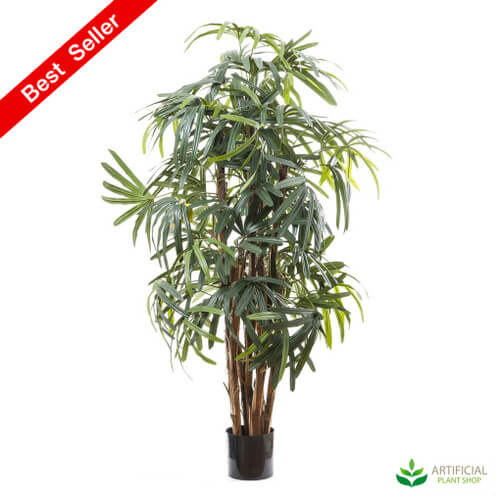
Like the Sago Palm, this artificial Raphis palm has lush-looking palm leaves that give it the appearance of a genuine tropical palm. It has textured and fibrous trunks and tropical foliage, creating a tropical ambience and giving you the feeling of being on vacation.
Also, this variety of Palm comes in several different sizes from 1 metre to 2.4m metres tall, so there is an option for every home interior décor. The standard back pot this palm arrives in is 20cm high and 20cm wide. To add a personal touch, we recommend living the plant up and placing it into a ceramic planter or basket.
Real-looking indoor palms
Parlour palms
|
|
|
|
|
The Parlour Palm (Chamaedorea Elegans) has been used as an interior plant for many years. This gorgeous plant with deep green leaves was discovered in Central America and introduced to Australia, where it quickly became a favourite indoor palm. It forms lovely clusters with light-textured foliage that conceals a slender trunk.
Single-stalk examples are occasionally available, although most palms are planted in tiny clusters to mimic palm-like bushes with varying trunk heights. The fronds are used in flower arrangements, Palm Sunday decorations, and wreaths because the leaves stay green for a long time after being plucked. The Parlour palm grows slowly and can take years to reach its full height. This is why people often choose one of the many artificial parlour palm options available online. Ranging in height from 1.4m to 1.8m they are available in straight or twisted trunk styles.
Areca Palms
|
|
|
|
|
Almost all neighbourhoods in warmer parts of Australia have these towering, beautiful, clumping palms that resemble bamboo trees. Areca palms have smooth, occasionally golden trunks that seem like bamboo.
Their fronds are small and dense, like bamboo leaves. They are frequently used as a privacy screen when cultivated outside. These palms can also be cultivated as houseplants. They grow slowly to moderately and are best planted in the spring. Areca Palms have become very popular in Australian households and are a go-to product for an instant tropical infusion into your space. Palms are one of the few plants that look great when you place several of them together, in close proximity.
Fake Sago Palms
The sago palm (Cycas revoluta) is not a real palm tree. Cycads are a category of prehistoric tropical and subtropical plants that typically grow from a trunk that does not spread out; it bears nuts but does not blossom or fruit. Sago palms are indigenous to Japan and southern China.
They are commonly cultivated as houseplants in milder areas. Plant them in the garden in the early spring or late fall. These plants grow exceedingly slowly, gaining only a few centimetres each year and producing only one new frond per year. Its feathery foliage spreads in a symmetrical ring.
Let’s face it, who wants to wait that long to enjoy a stunning looking Cycad?!
You can enjoy all the lifelike visual and textural details of a real Cycad without any of the drawbacks, by choosing an artificial version.
Fake Fan palms
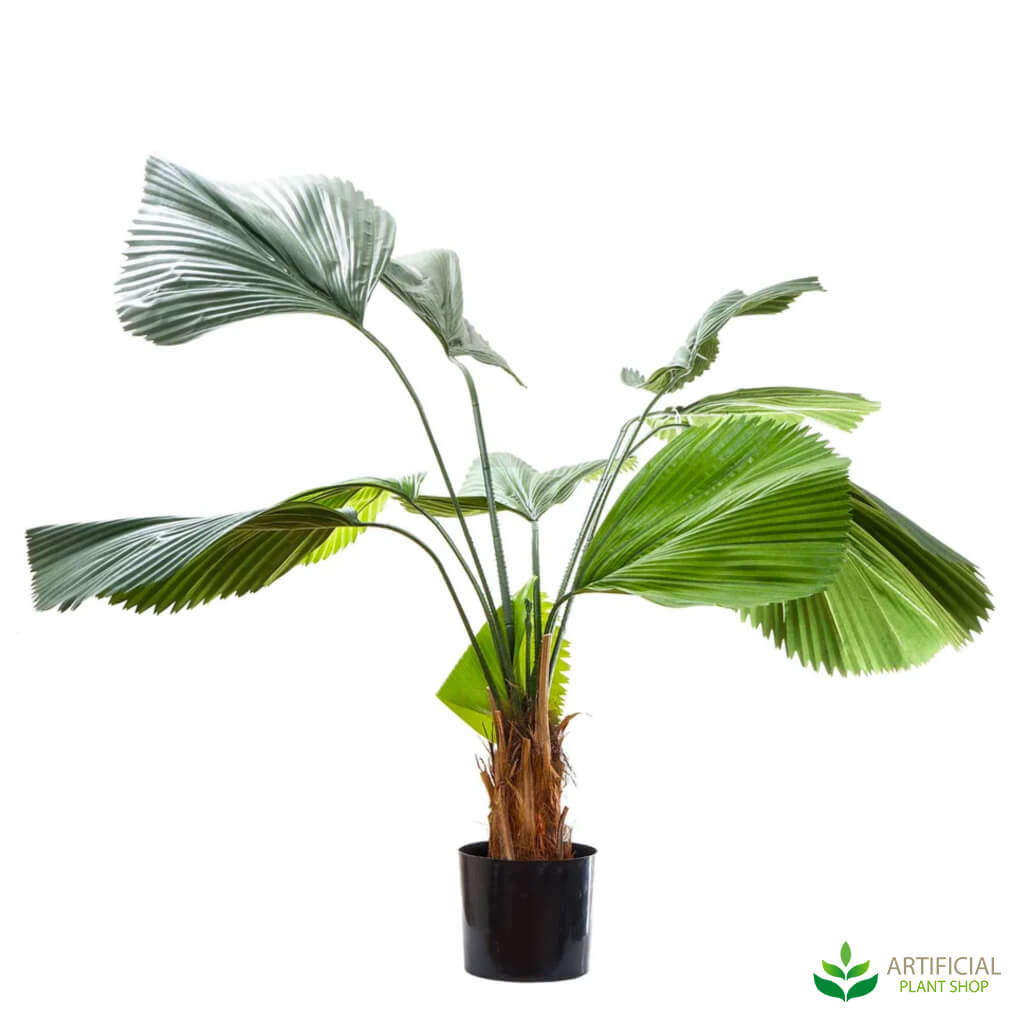
Chinese fan palms (Livistona Chinensis) are popular landscaping plants in hot, humid regions and make excellent interior potted palms. Because of how their fronds arch up and then stream downward like water from a fountain, these palms are also known as fountain palms. Each frond can reach a length of 1 to 1.5 m.
You should plant Chinese fan palms in the spring. When young, these slow-growing palms have a bushy look. However, after about a decade, their solitary, thin, greyish-brown trunk will be tall enough to be classified as a tree. Fan palms may survive for up to 40 years.
Rather than real fan palms, you could benefit from the low maintenance fake fan palms from a quality retailer, like us.
Artificial Kentia Palms
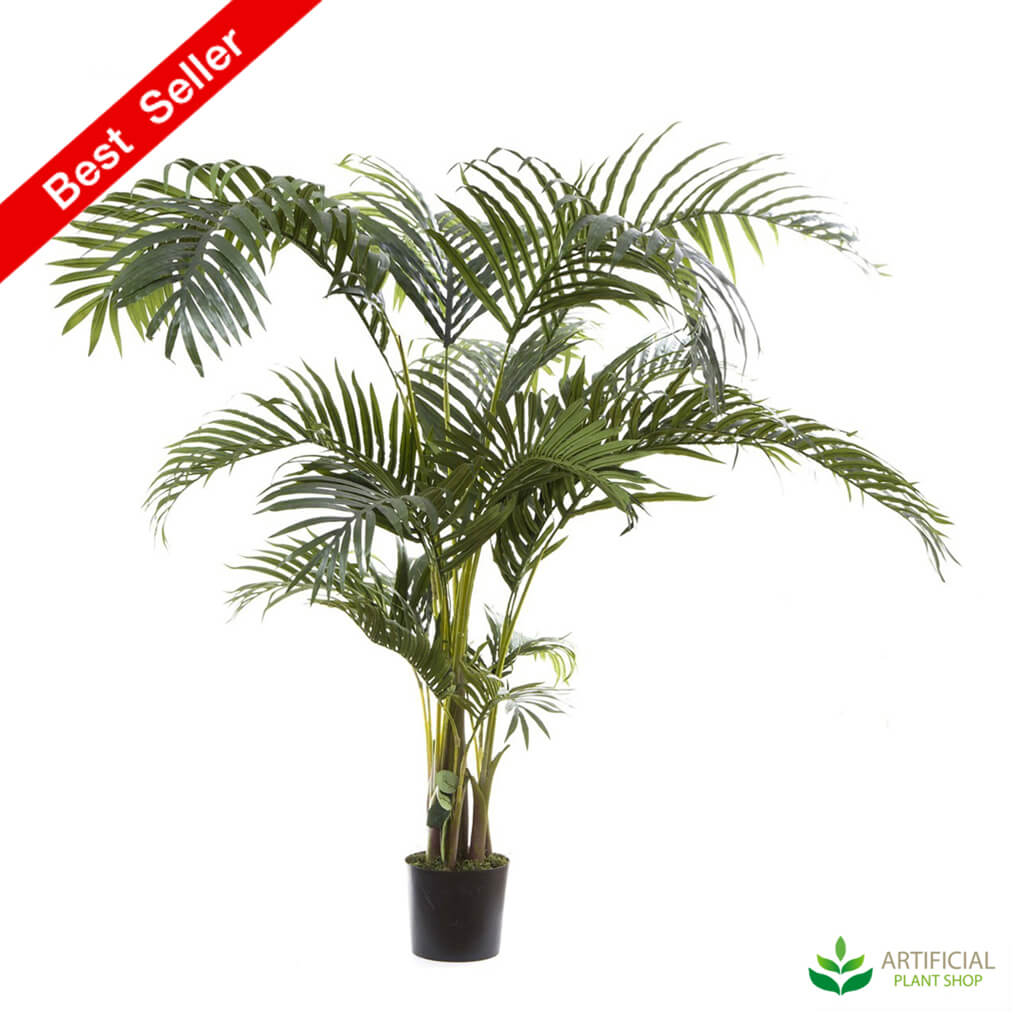
The kentia palm is one of the most popular indoor palms globally. While it isn't the most visually appealing indoor palm tree (that honour probably belongs to the Areca palm), it has everything you could want in an indoor plant: it's shade tolerant, cold-resistant, and doesn't grow unduly large.
A real kentia palm will steadily grow into a gorgeous figure that may reach up to 3 m tall in the right conditions (and even higher outdoors).
The kentia palm, which is native to the South Pacific islands, is frequently marketed in groups of two to five palms, creating the illusion of many stems topped with beautiful, arching leaves. There are some beautiful artificial kentia palms available online which are great way to add a low-maintenance tropical feel to your home.
Indoor Palm Trees
Palms are a distinctive and incredibly popular interior plants. Taller, mature palms are typically used to decorate larger spaces, rooms and foyers, providing an exquisite, tropical look to the space. Placing several together provides even more lush coverage and can feel as though you have nature all around you. Simultaneously, shorter, younger palms can be used to infuse a splash of greenery in different rooms around the home or office.
If you compare the workload with real ones, it’s easy to think of palm trees as strictly tropical plants—give them lots of sunlight and water, and they'll thrive. There are, however, desert species that will drown if given too much water, and yet others that cannot live without fertiliser. To grow a palm effectively, you must conduct extensive research on your chosen species. You can plant most palms in early spring, and they grow slowly, usually by less than 25 cm per year.
Decorating Tips for Indoor Palms
Decorating with indoor palm plants entails more than just bringing in one or two trees. You could also consider the following suggestions to create a warm, pleasant, and tranquil environment:
- Use palm plants with design elements and spotlights for a trendy and vibrant home décor. For example, if your walls are white, place the tree in a vibrant planter to offer some colour.
- Place the palm trees in low-light areas. The green tones will accentuate the space and make it feel cosier in this way.
- Introduce other plants indoors to create a more tropical atmosphere. Use of hues such as yellow, red, and blue. Of course, don't go overboard with the shade. Make sure that some of the walls retain softer tones.
- Add objects that reflect light if your house has red or brown undertones. For example, use a white planter.
How To Care for Real Indoor Palm Plants
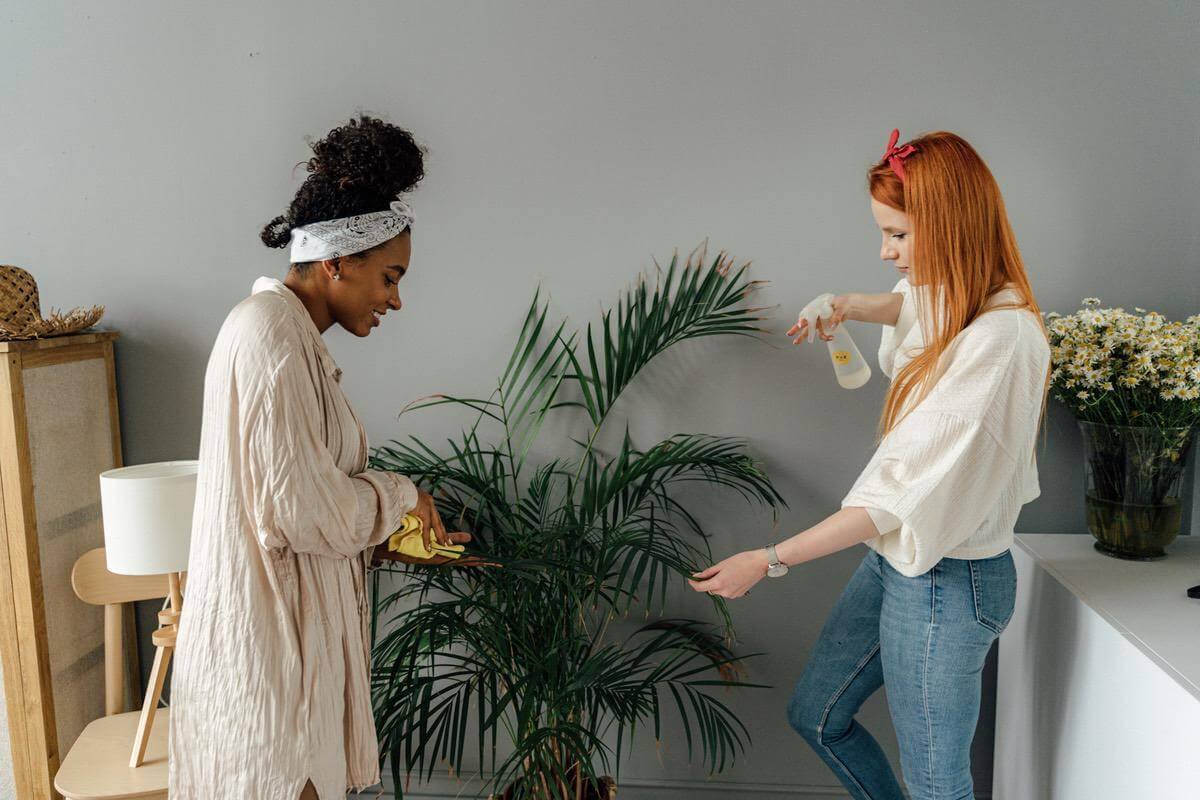
Let's say that you’ve decided you want to give a real palm tree a shot. How do you go about it? Here are a few key things to keep in mind… it’s sizeable list which is often why so many of us choose artificial ones instead.
Provide basic care
There are a variety of palm plants, each with its own unique set of requirements. However, their overall care needs are comparable. The optimal amount of water and light and the proper temperature range are critical for these plants. Allocating some quality time to care for your Palms will help keep these species healthy. Real Palm plants that are full, green, and brilliant are easily accessible.
Water appropriately
Palms require a lot of water, but you can overwater them. This can cause root rot or choke their roots. It is critical to use planters with holes at the bottom to avoid overwatering. Water them thoroughly until water comes out of the drainage holes. Then, empty the drainage tray to mitigate excess water from seeping back into the soil.
Otherwise, overwatering might result in a highly moist environment for the root system. Water these plants only until the top quarter to 1.2 cm of dry soil is saturated. They prefer a humid environment; regularly spraying them with a spray bottle will help create that environment. Low humidity might be a problem for some plants because they might dry out.
Soil moisture
Palm plants can get root rot if kept in a swampy marsh. Too much soil moisture can deprive the roots of oxygen, eventually killing them. Using a well-draining potting mix, such as perlite or vermiculite soil, is important. This helps to keep water from accumulating in the soil.
Fertiliser
Fertiliser can also help palms throughout their active growth period. Too much fertiliser, on the other hand, can induce fertiliser burn or leaf scorch caused by salts in the soil. You may avoid this by using a slow-release fertiliser or a diluted liquid fertiliser.
Light is vital
Palm trees provide an exotic and tropical feel to your space. So, you'd think they'd need a lot of scorching, strong sunshine, but this isn't always the case. Some palm species like direct sunshine, while most others prefer indirect or filtered light.
Some even perform well in dim light conditions. It's critical to understand what your unique palm plant wants. Only then can you be certain that you are providing proper lighting conditions.
Temperature should be optimal
Some palms are hardier than others, but palm trees generally prefer a warm environment… there is a reason they are referred to as tropical. Night-time temperatures should not be lower than 12 degrees or so. This varies by species, but palms often dislike cold air or being near a cool draught.
Repotting
Anyone who has experience with indoor gardening knows that repotting your plants regularly is vital. It's part of giving the greatest possible care to them. However, it should only be done when absolutely essential. Most palm plant species dislike having their root system disrupted.
Others even enjoy being confined to their current space. Be as gentle as possible while repotting these plants. After that, treat them gently for a while to allow them time to acclimatise.
Don't expose them to direct sunlight or fertiliser for the first several weeks after repotting. However, give them a good soaking. Some palm trees can grow to be enormous. Holding back a larger pot for as long as possible is one way to control growth.
Pruning
When your palm plants have dead or sickly fronds and stems, prune them. This can help keep your plants looking healthy and lively. These plants, however, are delicate and must be trimmed appropriately. When trimming, there are certainly things you should do and verging things you shouldn’t.
Remove any fronds that seem to be withered, worn out, yellow, brown, or otherwise sickly. It’s often easiest to use a pair of snips to do this. If an entire stem is covered in dying or dead fronds, it can be cut at the base. Using pruning shears, cut the stem about 2.5 cm from the trunk.
Don't injure the trunk by unintentionally cutting it or tugging too hard on it. Over pruning can upset your plant, causing it to die out. Some people believe that cutting their palms might cause them to grow quicker, but this is not the case.
Palms get their nourishment via their leaves. So, if you're only pruning for looks, try not to remove too many fresh, greenish fronds. This might seriously harm your plants.
Pest control
Pests, as most would assume, are less likely to attack indoor plants than outdoor ones, but that doesn't mean they can't get to them. Spider mites are the biggest concern for indoor palm trees, although mealybugs may also try to feast on them.
Look for a bug infestation if you see the fronds on your plants turning yellow or withering. If you believe you have a pest problem, it is safer for your plants if you wash the fronds with soap and warm water every couple of days until the issue is resolved instead of using harsh pesticides.
Speak To Indoor Palm Plant Sourcing Specialists
There are so many indoor palm plants on the market today, it’s easy to get confused when shopping for the one that best fits your space. So, if you are searching for an indoor palm plant for your home, office, church, mosque, education centre, or any other place, it is best to seek the guidance of a plant expert to assist you with choosing the right indoor palm plants for your use. The biggest question is whether to go real or artificial. Do you have the time to care for a real Palm, doing all the things listed above?
If the answer is no, you can still enjoy all the visual and textural benefits of a stunning Palm Palm by finding a quality fake plant option.


